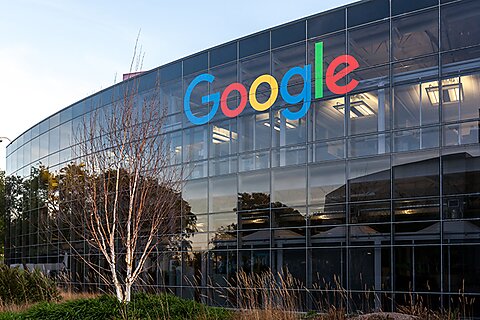What the Google Antitrust Remedies Ruling Means for Antitrust, Consumers, and Innovation

On September 2, 2025, Judge Amit Mehta ruled on the remedies related to his previous finding that Google’s search distribution agreements with web browsers and smartphones had violated antitrust laws. While the decision focused only on this one element, the Department of Justice’s initial request for remedies had been extremely broad and could have resulted in a breakup of the tech company. The ruling rejects the most extreme of these requests and instead cabins remedies to data sharing and the payment around these agreements.
So, what can we learn from this outcome in light of other ongoing antitrust litigation for consumers, innovation, and the future of antitrust law?
What do the Google Remedies tell us about antitrust law?
Although debate—and likely an appeal—will continue over the ruling that Google is a monopoly, the decision on remedies rejects the more extreme proposals for remedies, which could have expanded government intervention into businesses through aggressive antitrust enforcement and resulted in breaking up the company.
In his ruling, Judge Mehta rejected the request to force Google to sell off Chrome, noting that such was beyond the scope of the case at hand. I have discussed in previous work how such a remedy would have been bad for the future of antitrust law by allowing remedies and government intervention into other aspects of a company’s business, ultimately harming consumers.
In general, Judge Mehta attempts to tailor the remedies to resolve the harm he found while minimizing the potential broader consequences. For example, while the remedies require additional data sharing with competitors, they reject the broader data sharing requirements initially requested by the government that could have also raised other concerns around privacy and security, and limit restraints on payments for agreements to those at hand in the case. Notably, this more limited approach aligns with the initial decision that continued the existing antitrust standards dictating that Google has no “duty to deal” when it comes to its rivals.
With a number of ongoing antitrust cases for both Google and other leading tech companies, this should signal that even if successful in their claims of monopoly, the remedies must be tied to the harm found, and that the government may not merely use a single case to result in broader intervention into a company’s multiple lines of business.
Innovation
Technology has progressed rapidly in the months since the initial decision in the Google search engine distribution agreements case. Innovation has often been our best competition policy, and as Judge Mehta notes in his ruling, “The emergence of GenAI changed the course of this case.”
One of the unique aspects of the debate over antitrust intervention in “Big Tech” is how rapidly these markets change. Less than 30 years ago, there were concerns that companies like Nokia, Yahoo!, and MySpace were tech leaders that couldn’t be stopped. What ultimately challenged these giants was not government intervention via antitrust enforcement but rather innovation that changed the market and our experience of technology. By keeping barriers to innovation low and allowing a variety of exit strategies, we may see the very nature of the market change.
Given this rapid change, we should consider the cautionary tale of how antitrust intervention might prevent further competition in these emerging markets in ways that could result in fewer choices for consumers. Microsoft was the subject of a significant antitrust case over browsers at a time when the smartphone market and mobile browsers were emerging. While the case at hand did not directly challenge its potential entry into this emerging market, such regulatory scrutiny limited the potential resources the company could direct towards such. As Bill Gates later stated, “We were distracted during our antitrust trial. We didn’t assign the best people to do the work. So it’s the biggest mistake I made in terms of something that was clearly within our skill set.”
With competition in the AI market a global competition and an important national security objective, we should carefully consider not only how this emerging market may affect the current market definitions but also the impact that requiring leading tech companies to dedicate their resources to antitrust cases could have on the investment and development of this technology.
Consumers
The most important question we should ask in any antitrust case or remedies is what it means for consumers. After all, consumer welfare is supposed to be the central focus of much of our antitrust enforcement.
As with the future of antitrust law, some of the most egregious remedies that would require changes to technology that could frustrate consumers and give them inferior products in ways similar to Europe were avoided. Splitting off Chrome would have had significant consequences for consumers, both in terms of developers using browser engines and end users. For the everyday consumers (end users in tech speak), splitting up a company also means splitting up teams and creating barriers between products. The result can be both less innovation and more friction.
In general, the remedies minimize some of the most significant elements of potential consumer harm. However, consumers may still see some impacts. Consumers should be aware of data-sharing mandates that can impact which companies they trust and must also share their data with, even when narrowly tailored or at an aggregate level, to ensure they are comfortable with such options. Similarly, while not mandated, it is still possible defaults may change, and consumers who prefer Google’s product may have to take additional steps to use that product.
Conclusion
The fast-moving pace of innovation has shown how, even over the course of an antitrust case, our understanding of markets and competitors may shift. In general, Judge Mehta’s rejection of the most radical remedies suggested by the Department of Justice should be seen as a positive outcome for antitrust law, innovation, and consumers. Still, the rapid pace of technological change raises concerns about the underlying ruling’s findings on AI’s role in the market mere months later, and should raise questions about what impact aggressive antitrust might have on innovation and consumers, and if judges and regulators are asked to predict the future.





